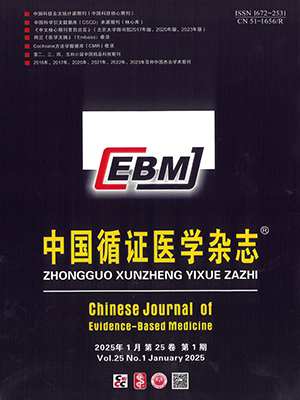Objective To evaluate and select essential medicine for acute exacerbation of chronic bronchitis (AECB) using evidence-based methods based on the burden of disease.
Methods By means of the approaches, criteria, and workflow set up in the second article of this series, we referred to the recommendations of evidence-based or authority guidelines from inside and outside China, collected relevant evidence from domestic clinical studies, and recommended essential medicine based on evidence-based evaluation. Data were analyzed by Review Manager (RevMan) 5.1 and GRADE profiler 3.6 to evaluate quality of evidence.
Results (1) Five guidelines were included (four foreign guidelines, one domestic guideline; three based on evidence, two based on expert consensus). (2) Medicines recommended at least twice by the National Essential Medicine List (NEML, 2009 version) and Chinese National Formulary (CNF) contained: ipratropium bromide (four times), amoxicillin amp; clavulanate potassium (three times), and corticosteroid (three times), cefuroxime (twice), ciprofloxacin (twice), levofloxacin (twice), salbutamol (twice) and dextromethorphan (twice). (3) As for domestic study evidence, a result of one RCT indicated that amoxicillin amp; clavulanate potassium had efficiencies of 92.3% to 94.7% (n=77, low quality). A result of three RCTs (n=275, low quality) indicated that cefuroxime had efficiencies of 67.6% to 90% and an incidence of 5% as to adverse reaction that mainly included skin rashes, diarrhea, etc. A result of two RCTs (n=120, low quality) indicated that ciprofloxacin had efficiencies of 78.3% to 86.6%, bacterial clearance rates of 72.7% to 86.5% and the incidences of 8.7% to 16.2% as to adverse reaction that mainly included gastrointestinal reaction, skin rashes, etc. A result of seven RCTs (n=523, low quality) indicated that levofloxacin had efficiencies of 72.5% to 94.5%, bacterial clearance rates of 82.1% to 95.8% and the incidences of 5% to 7.5% as to adverse reaction. A result of two RCTs (n=239, low quality) indicated that salbutamol had efficiencies of 85.4% to 96.7%. A result of one RCT (n=95, low quality) indicated that ipratropium bromide had efficiencies of 98%. A result of five RCTs (n=466, low quality) indicated that the combined use of budesonide and bronchodilators had efficiencies of 93.4% to 97.8%.
Conclusion (1) We offer a b recommendation for cefuroxime, amoxicillin amp; clavulanate potassium, ciprofloxacin and levofloxacin used in the treatment of AECB. (2) We offer a b recommendation for glucocorticoid (budesonide, aerosol) and anticholinergic bronchodilator (ipratropium bromide) and a weak recommendation for short-acting β2-agonist bronchodilator (salbutamol) and antitussive agent (dextromethorphan) for alleviating symptoms due to AECB. (3) We make a recommendation against mucolytic agents and theophylline as routine use. (4) More large-scale, multi-center, double-blinded RCTs are needed in clinical and pharmacoeconomic studies on AECB and outcome indicator should be improved in order to produce high-quality local evidence.
Citation: WANG Yingqiang,LI Honghao,LI Youping,LI Cuicui,YANG Zongxia,SHEN Jiantong,LI Xiao,YANG Xiaoyan,WANG Li,LI Xianglian. Evidence-Based Evaluation and Selection of Essential Medicine for Township Health Centre in China: 4. Acute Exacerbation of Chronic Bronchitis. Chinese Journal of Evidence-Based Medicine, 2012, 12(8): 878-887. doi: 10.7507/1672-2531.20120143 Copy
Copyright © the editorial department of Chinese Journal of Evidence-Based Medicine of West China Medical Publisher. All rights reserved




